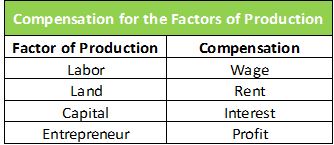Rent
View FREE Lessons!
Definition of Rent:
Rent is the compensation for land.
Detailed Explanation:
Most definitions of rent include payments on assets owned by another party. For example, rent is paid on a leased apartment or leased equipment. Economists take a narrower view of rent. For them, it is limited to land or another factor of production with a fixed supply.
Land has a fixed supply. Unlike other productive assets, the quantity supplied of land will not increase in response to an increase in price. The demand for land is derived, as is the demand for all the factors of production. A difference between land and the other factors of production is that when the price of other factors of production increases, the quantity supplied of the factor of production also increases. For example, when the demand for labor increases, wages are bid higher, and more people enter the workforce or work longer hours. When more of a good or service is demanded, the demand for the equipment (capital good) to manufacture the good or service increases and suppliers will manufacture more of the equipment needed. Even the supply of entrepreneurs increases following the success of another company.
Assume the demand for wheat increases, pushing up the price to a point where some farmers begin cultivating marginal fields. The demand for land is derived from the demand for wheat. However, land cannot be produced, so less productive land is used. Farmers receive added income when their land is more productive than the marginal land farmed by others. The additional compensation is paid directly as rent if they lease their land, or as added revenue because the land produces more of the crop per acre. To illustrate this point, assume there are two wheat farmers. One owns very productive land, while the other owns marginal land. Each expends the same amount of energy tending their fields. They treat their fields in the same way. The farmer with the more productive land would earn more than the farmer with the marginal land. Economists refer to the difference as economic rent. Royalties paid for the use of a patent is another example of economic rent because the patent has a vertical supply curve. There is only one patent, and an increase in the demand for a good or service does not increase the quantity supplied.
The factors of production include labor, land, capital, and entrepreneurship. Economists use separate terms to describe the compensation for each of the factors of production. Wages are paid to labor, rent to landholders, interest as a return on investments in capital, and profits accrue to entrepreneurs.

Dig Deeper With These Free Lessons:
Factors of Production – The Required Inputs of Every Business
Supply and Demand – When Producers and Consumers Reach Agreement
Price Elasticity of Supply – How Does a Producer Respond to a Price Change